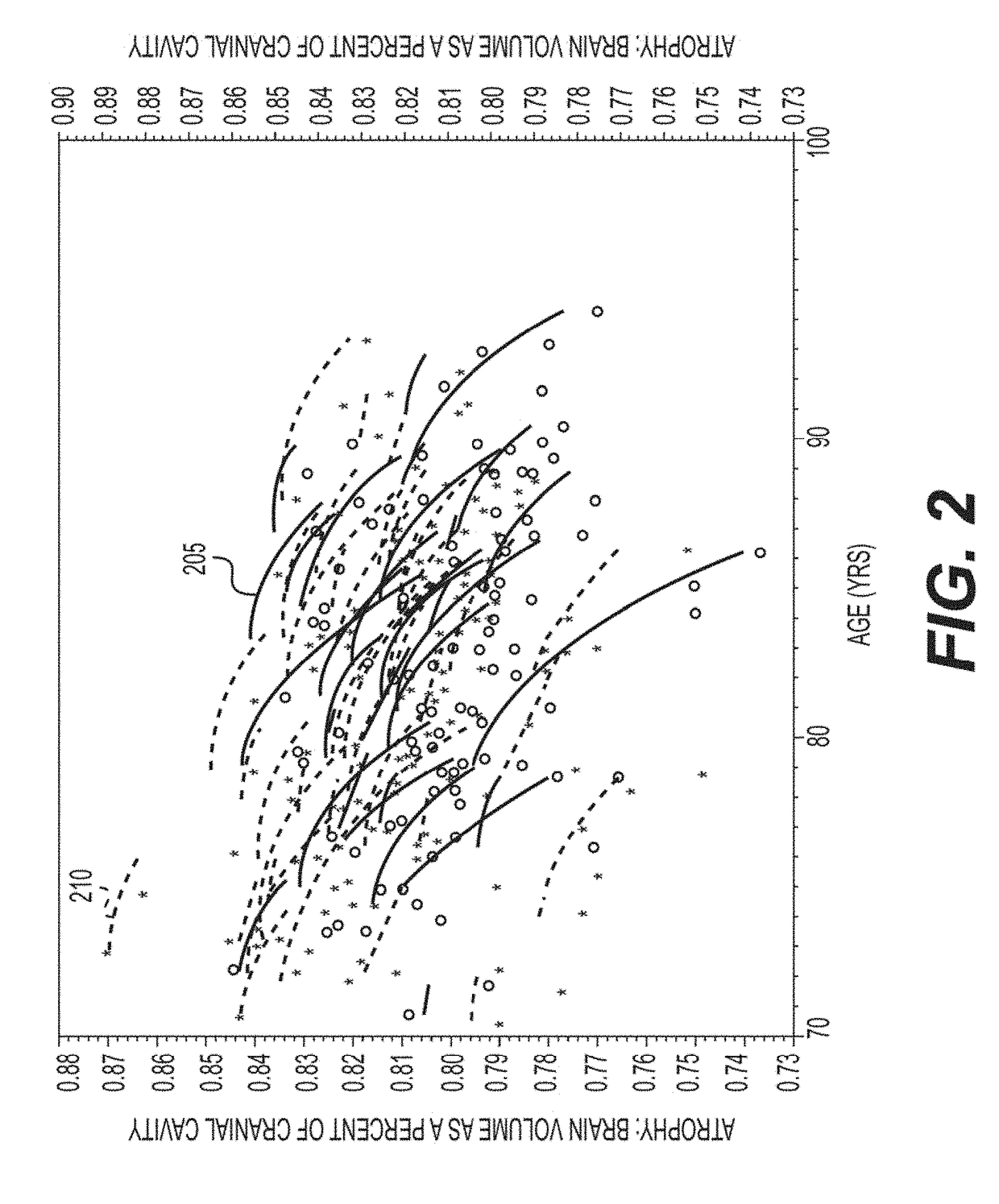System, method and computer-accessible medium for the determination of accelerated brain atrophy and an optimal drainage site for a subdural hematoma using computed tomography
- Summary
- Abstract
- Description
- Claims
- Application Information
AI Technical Summary
Benefits of technology
Problems solved by technology
Method used
Image
Examples
Embodiment Construction
[0010]To that end, in order to overcome some of the deficiencies presented herein above, an exemplary system, method and computer-accessible medium for determining an attribute(s) of a brain of a patient, can include, for example, receiving information obtained from a computed tomography (“CT”) scan(s) of a portion(s) of the brain, generating a CT image(s) that can be based on the information, and determining the attribute(s) of the brain based on the CT image(s) by segmenting an intracranial space (ICS) or the lesion of interest (e.g. hematoma) in the CT image(s). The attribute(s) can include a presence or absence of Alzheimer's disease, and can also include a total volume of the brain, brain volume as a percent of cranial cavity or volume of the lesion, or attribute(s) of the lesion (e.g. centroid, most dependent part). The ICS can be segmented by performing thresholding CT image, which can be a parallel procedure. The procedure can be performed by selecting a plurality of voxels ...
PUM
 Login to View More
Login to View More Abstract
Description
Claims
Application Information
 Login to View More
Login to View More - R&D
- Intellectual Property
- Life Sciences
- Materials
- Tech Scout
- Unparalleled Data Quality
- Higher Quality Content
- 60% Fewer Hallucinations
Browse by: Latest US Patents, China's latest patents, Technical Efficacy Thesaurus, Application Domain, Technology Topic, Popular Technical Reports.
© 2025 PatSnap. All rights reserved.Legal|Privacy policy|Modern Slavery Act Transparency Statement|Sitemap|About US| Contact US: help@patsnap.com



